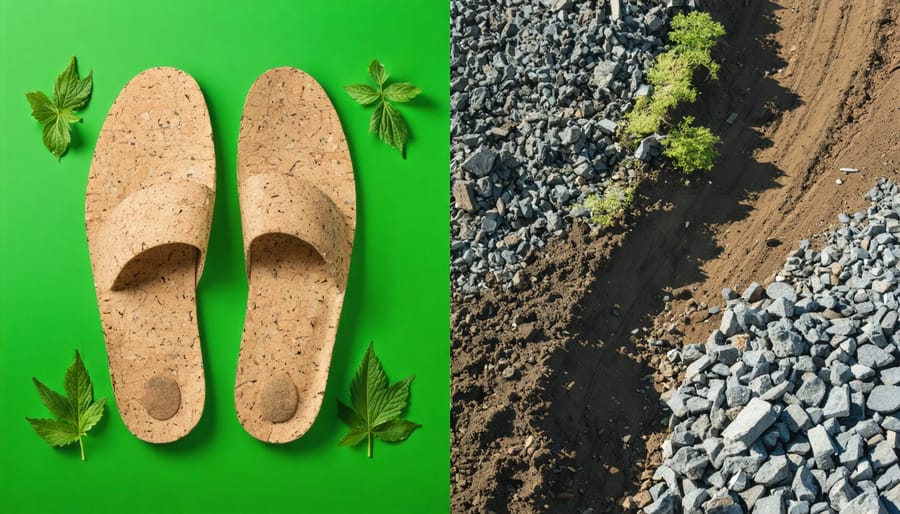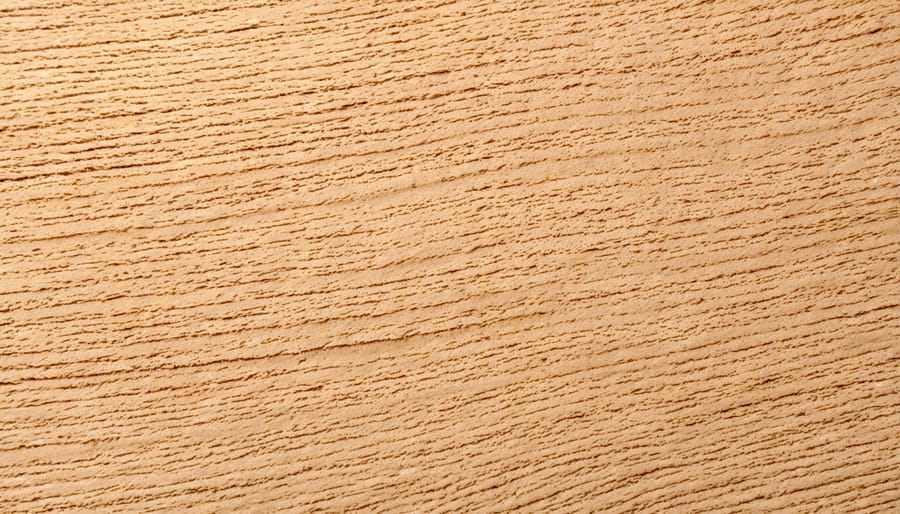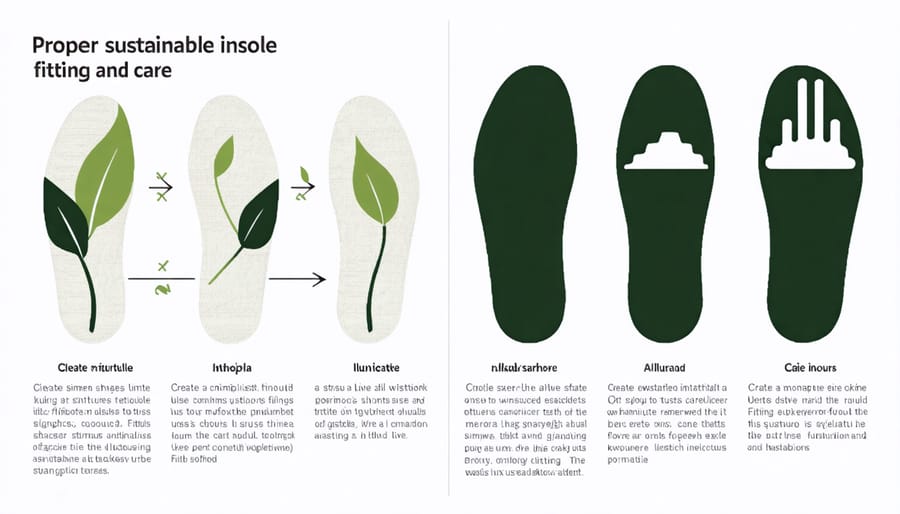
Step into a world where every footstep leaves a lighter environmental impact. As our awareness of quality sustainable fashion grows, innovative shoe insoles are emerging as an unexpected hero in the eco-conscious movement. These small but mighty accessories are revolutionizing how we think about comfort and sustainability in our daily walks.
Traditional insoles, often made from petroleum-based materials, can take centuries to decompose in landfills. But today’s sustainable alternatives – crafted from cork, recycled foam, natural latex, and even mushroom leather – offer the same comfort while treading lightly on our planet. These eco-friendly options don’t just support your feet; they support a future where fashion and environmental responsibility walk hand in hand.
Whether you’re a conscious consumer looking to reduce your carbon footprint or someone seeking comfortable, long-lasting footwear solutions, sustainable insoles represent a simple yet impactful change you can make today. By choosing these earth-friendly alternatives, you’re not just investing in your comfort – you’re stepping forward into a more sustainable future, one insole at a time.
Why Sustainable Insoles Matter More Than You Think
The Hidden Environmental Cost of Regular Insoles
Have you ever wondered what happens to your old insoles when you toss them out? Like many everyday items we take for granted, regular insoles carry a hidden environmental burden that’s rarely discussed. Most conventional insoles are made from synthetic materials like EVA foam and polyurethane, which can take hundreds of years to decompose in landfills.
The manufacturing process itself is another environmental concern. Traditional insole production typically involves petroleum-based materials and energy-intensive processes that release greenhouse gases into the atmosphere. What’s more, many insoles contain adhesives and chemicals that can leach into soil and waterways when disposed of improperly.
I was shocked to learn that the average person goes through 2-3 pairs of insoles annually, contributing to approximately 300 million insoles ending up in landfills each year in the US alone. The plastic-based materials used in these insoles will outlive several generations of our families.
The good news? We’re seeing a shift in consciousness, with more consumers like you and me seeking out eco-friendly alternatives that provide the same comfort without the environmental impact.

Beyond Comfort: The Eco-Friendly Revolution
Remember when “eco-friendly” meant sacrificing comfort and style? Those days are thankfully behind us! As someone who’s been on a journey to make more sustainable fashion choices, I’m thrilled to share how insole technology has evolved to embrace both comfort and environmental responsibility.
Today’s sustainable insoles are crafted from innovative materials like recycled cork, organic cotton, and natural rubber. What amazes me most is how manufacturers have found ways to transform materials like bamboo fibers and recycled ocean plastics into incredibly comfortable insoles that rival their traditional counterparts.
The revolution doesn’t stop at materials, though. Many eco-conscious brands have adopted zero-waste manufacturing processes, using solar power and water conservation techniques. Some even implement take-back programs, ensuring your old insoles don’t end up in landfills.
The best part? These sustainable alternatives often offer superior moisture-wicking properties and natural antimicrobial benefits, proving that doing good for the planet doesn’t mean compromising on performance. It’s a win-win situation that our feet and Mother Earth can celebrate together!
Natural Materials Reshaping Comfort
Cork: Nature’s Perfect Cushion
Have you ever wondered why cork is showing up in more sustainable fashion choices? Let me share why I fell in love with cork insoles and why they might be your feet’s new best friend. Cork isn’t just for wine bottles – it’s nature’s perfect cushioning material, and it’s revolutionizing how we think about comfortable, eco-friendly footwear.
Cork has this amazing ability to mold to your foot’s unique shape while maintaining its supportive structure. Think of it as memory foam, but natural and more breathable. What really surprised me when I first tried cork insoles was how they seemed to get more comfortable over time, adapting to my walking pattern and providing custom support where I needed it most.
But the benefits don’t stop at comfort. Cork is naturally antimicrobial, which means goodbye to that not-so-pleasant shoe odor! It’s also moisture-wicking, keeping your feet dry during those busy days running errands or chasing after the kids. And here’s something that makes my sustainable heart happy: cork is harvested without harming the trees, which continue producing this remarkable material for decades.
What I particularly love about cork insoles is their durability. Unlike synthetic materials that break down quickly, cork maintains its supportive properties for years, making it not just an eco-friendly choice but a smart investment in your comfort and wallet.

Recycled and Plant-Based Innovations
The world of sustainable insoles has seen incredible innovation in recent years, with manufacturers turning to both recycled materials and plant-based alternatives. I recently discovered that many brands are now using recycled foam from old sneakers and mattresses, giving new life to materials that would otherwise end up in landfills. It’s amazing how these recycled foams maintain the same comfort and support as their virgin counterparts!
Plant-based materials are another game-changer in the insole industry. Cork, for instance, has become a popular choice not just for its sustainability but also for its natural moisture-wicking properties. I’ve found that bamboo-based fabrics work wonderfully in insoles, offering natural antimicrobial properties while being incredibly soft against your feet.
One of my favorite innovations is the use of algae-based foam, which not only creates comfortable insoles but actually helps clean water systems during its production process. Other exciting materials include coconut fiber, which provides excellent ventilation, and compressed wool felt made from recycled textile waste.
Many of these sustainable materials are combined with recycled rubber for the base layer, creating durable insoles that can withstand daily wear while remaining eco-friendly. What’s particularly exciting is that these innovative materials often perform better than traditional options, offering enhanced breathability and natural odor control.
Making the Switch: Personal Care Meets Planet Care

Finding Your Perfect Eco-Friendly Fit
Finding your perfect sustainable insole match is like dating – it’s all about compatibility and knowing what you’re looking for! As someone who’s spent countless hours testing different options (and dealing with achy feet), I’ve learned that the right choice combines both eco-consciousness and personal comfort.
Start by assessing your specific needs. Do you need extra arch support, cushioning for high-impact activities, or something slim for your favorite sustainable footwear brands? Make a mental checklist of your non-negotiables.
Consider your typical daily activities. A yoga instructor might prioritize flexibility and breathability, while someone who stands all day might need more substantial support. Your lifestyle should guide your choice.
Material matters too! Look for insoles made from natural cork, organic cotton, or recycled materials. These options often provide excellent support while keeping your environmental impact low. Many eco-friendly insoles now feature moisture-wicking properties and natural antimicrobial treatments – perfect for those of us who are always on the go!
Don’t forget to check the sizing guidelines carefully. Unlike regular insoles, sustainable options might have slightly different sizing recommendations. Some brands offer trim-to-fit options, which are great for getting that perfect custom feel.
Remember, the most sustainable choice is one that lasts, so invest in quality pieces that match your needs and values. Your feet (and the planet) will thank you!
Caring for Your Sustainable Insoles
Just like your favorite pair of shoes, sustainable insoles deserve proper care to ensure they last longer and maintain their eco-friendly properties. I’ve learned through experience that a little maintenance goes a long way in extending the life of these earth-conscious accessories.
Start by removing your insoles nightly to let them air out completely. This simple habit prevents moisture buildup and helps maintain their shape. For cleaning, use a gentle brush to remove surface dirt, and spot clean with a damp cloth using mild soap when needed. Avoid machine washing as this can damage the natural materials and compromise their structure.
If your insoles get wet, resist the urge to use direct heat sources like hairdryers or radiators. Instead, let them dry naturally at room temperature, preferably overnight. This prevents warping and preserves the integrity of sustainable materials like cork or bamboo.
For odor control, try sprinkling a little baking soda on the insoles and letting it sit overnight before brushing it off. This natural deodorizer works wonders without introducing harsh chemicals into your eco-friendly footwear routine.
Remember to rotate between two pairs of insoles if possible. This gives each pair adequate time to decompress and dry out completely, ultimately extending their lifespan and reducing the frequency of replacements.
As we wrap up our journey into the world of sustainable insoles, it’s important to remember that every step we take matters – quite literally! By choosing eco-friendly insoles, you’re not just taking care of your feet; you’re taking care of our planet too. Each pair of sustainable insoles represents one less set of synthetic materials in our landfills and one more choice toward a greener future.
I’ve personally noticed how making this simple switch has inspired me to look for other sustainable alternatives in my daily life. It’s amazing how one conscious decision can create a ripple effect of positive changes. Many of my readers have shared similar experiences, from exploring sustainable fashion to adopting more eco-friendly lifestyle habits.
The beauty of sustainable insoles lies not just in their environmental impact but in their ability to perform just as well as – if not better than – their conventional counterparts. They prove that we don’t have to compromise on comfort to make environmentally responsible choices.
Ready to take that first step? Start small by replacing your current insoles with a sustainable option when they wear out. Share your experience with friends and family, and remember that every sustainable choice, no matter how small, contributes to a better future for all of us. Together, we can walk towards a more sustainable tomorrow, one step at a time.



